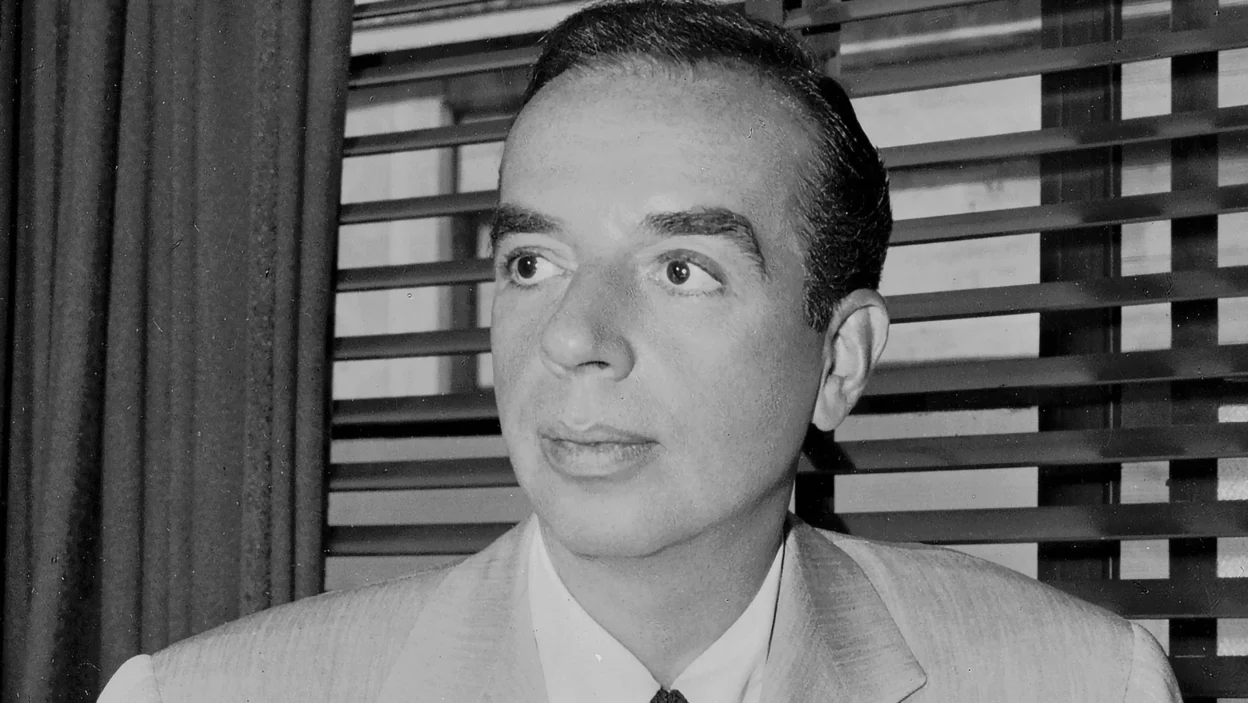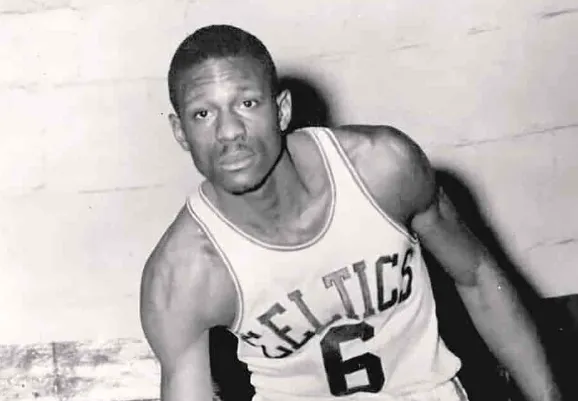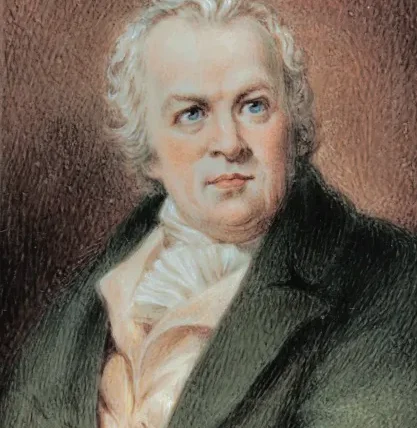Early Life and Family Background
Growing up in the fast-paced city of Chicago, Vincente Minnelli was raised in a household that exuded creativity and glamour. Born on February 28, 1903, to Vincent Minnelli Sr. and Marie Émilie Odile Lebeau, his childhood was filled with colorful characters and artistic influences. His father, a musical conductor, introduced Vincente to the world of music at an early age, while his mother, a former actress, sparked his interest in the performing arts.
Minnelli’s family background played a significant role in shaping his artistic sensibilities. His mother’s love for theater and his father’s passion for music ignited his curiosity and laid the foundation for his future endeavors.
Surrounded by a vibrant artistic community, Minnelli was exposed to a kaleidoscope of ideas and cultures, which would later manifest in his distinctive directorial style. This rich tapestry of experiences formed the bedrock of his creativity, fueling his desire to explore the realms of music, dance, and visual storytelling.
As he once reminisced, “My earliest memories are of dancing and singing around the house, with my parents encouraging my every move.” It was this nurturing environment that set the stage for Minnelli’s future as a visionary filmmaker.
Education and Early Career
Liza Minnelli’s journey into the world of entertainment was greatly influenced by her early exposure to the performing arts. Born on March 12, 1946, in Los Angeles, California, she grew up in a household teeming with creative energy. Her mother, Judy Garland, was a renowned actress and singer, while her father, Vincente Minnelli, made a name for himself as a celebrated film director. Surrounded by these influential figures, it was only natural for Liza to develop a deep passion for the arts from an early age.
Despite her privileged upbringing, Liza faced the challenge of living up to the towering achievements of her parents. However, she effortlessly carved a niche of her own through her exceptional talent and determination. Gifted with a remarkable singing voice and impeccable dance skills, Liza honed her craft through rigorous training and education in prestigious institutions.
She attended the High School of Performing Arts in New York City, where she received comprehensive training in various aspects of performing arts, including acting, singing, and dancing. These formative years laid a solid foundation for her future career and provided her with invaluable skills that would shape her artistic identity.
Entry into the Film Industry
Early Interest in Film
From an early age, Vincente Minnelli displayed a keen interest in the world of film. Growing up in Chicago during the 1920s, he would often escape the confines of his working-class neighborhood by immersing himself in the magical world of cinema. Minnelli was captivated by the way films could transport audiences to far-off places and evoke a range of emotions.
Drawing inspiration from this early exposure to motion pictures, Minnelli began experimenting with his own film projects, using a borrowed 8mm camera to bring his creative visions to life. It was during this time that he discovered his passion for storytelling through the visual medium of film.
The Move to New York
In pursuit of his dreams, Minnelli made the bold decision to move to New York City in the early 1930s. With the bustling metropolis as his backdrop, he eagerly immersed himself in the city’s vibrant arts scene, hoping to break into the film industry. Minnelli’s determination and raw talent quickly caught the attention of local theater directors and producers, who recognized his unique storytelling abilities and eye for visual composition.
Through his work on stage productions, Minnelli honed his skills in set design and costume creation, gaining a reputation for his meticulous attention to detail. It was this dedication to his craft that ultimately caught the attention of Hollywood executives, paving the way for his entry into the film industry.
Early Successes and Breakthrough Films
Minnelli’s early successes in the film industry cemented his reputation as a visionary director with a unique artistic flair. One of his breakthrough films was “Meet Me in St. Louis” (1944), a musical drama set in the World’s Fair of 1904. With enchanting performances and Minnelli’s meticulous attention to detail, the film captivated audiences and garnered widespread critical acclaim. Its success not only established Minnelli as a director to watch but also showcased his ability to skillfully blend music, dance, and storytelling.
Another significant breakthrough for Minnelli came with the release of “An American in Paris” (1951). This musical masterpiece, starring Gene Kelly, showcased Minnelli’s innovative directing style and his ability to elevate the genre to new heights.
Through his use of vivid colors, visually stunning dance sequences, and intricate set designs, Minnelli created a cinematic experience that would forever change the landscape of musical films. The film went on to win multiple Academy Awards, including Best Picture, and solidified Minnelli’s position as a leading director in Hollywood.
Collaborations with MGM Studios
One of the significant turning points in Minnelli’s career was his collaboration with MGM Studios in the mid-1940s. It marked the beginning of a fruitful and influential partnership that would produce some of his most memorable and iconic works. As he joined the studio, Minnelli quickly established himself as a highly skilled director, bringing a unique blend of style and substance to his films.
Working closely with the talented pool of actors and technicians at MGM, Minnelli’s films showcased his distinctive visual flair and meticulous attention to detail. He had the ability to transform even the most ordinary settings into breathtaking works of art, utilizing his expertise in set design, lighting, and color to create stunning visual compositions.
In films like “Meet Me in St. Louis” (1944) and “The Pirate” (1948), he brought a sense of elegance and sophistication to the screen, elevating the musical genre to new heights. Collaborating with renowned choreographer Robert Alton, Minnelli’s dance sequences became vibrant and dynamic spectacles, captivating audiences with their precision and beauty. These films not only showcased Minnelli’s talent but also solidified MGM’s reputation as a producer of high-quality, visually stunning musicals.
Minnelli’s collaborations with MGM proved to be a critical turning point in his career, propelling him into the limelight and earning him widespread recognition within the film industry. The success of his early films with MGM established him as a masterful director and attracted the attention of both audiences and critics alike.
It was during this period that Minnelli perfected his signature directing style, characterized by his innovative use of Technicolor and his ability to seamlessly integrate music and dance into the narrative. His films became synonymous with glamour and sophistication, reflecting the zeitgeist of post-war America.
As a result, Minnelli received numerous awards and accolades, including an Academy Award for Best Director for his work on “Gigi” (1958). The partnership between Minnelli and MGM set the stage for a series of iconic films that would leave an indelible mark on Hollywood and the film industry as a whole.
Innovative Directing Style and Technicolor Films
Innovative Directing Style
Liza Minnelli, known for her remarkable talent in film direction, introduced an innovative style that captivated audiences and challenged the norms of traditional filmmaking. Her unique approach to directing brought a fresh perspective to the silver screen, pushing boundaries and creating awe-inspiring visuals. With a keen eye for detail and a flair for creativity, Minnelli expertly crafted each scene to evoke emotions and immerse viewers in a world unlike any other.
Technicolor Films
One of Minnelli’s most notable contributions to the film industry was her masterful utilization of Technicolor technology. This revolutionary cinematic technique allowed for vibrant and vivid colors to be showcased on screen, breathing life into Minnelli’s films.
With meticulous attention to color palettes and visual aesthetics, she transformed her movies into a feast for the eyes. From rich and bold hues to subtle and delicate tones, Minnelli’s use of Technicolor enhanced the storytelling experience, making her films visually stunning and unforgettable.
Furthermore, the use of Technicolor became a signature element of Minnelli’s directing style, setting her apart from her peers. The way she seamlessly integrated color into her storytelling added depth and dimension to the narrative, creating a visual language that resonated with audiences. By harnessing the power of Technicolor, she was able to enhance the emotions and themes of her films, leaving a lasting impact on the world of cinema.
Minnelli’s innovative approach to directing and her utilization of Technicolor truly revolutionized the way films were created and experienced, cementing her legacy as a visionary filmmaker.
Exploration of Musical and Dance Genres
In the realm of cinema, Vincente Minnelli is widely celebrated for his unparalleled exploration of musical and dance genres. Displaying an exquisite blend of innovative storytelling and captivating performances, Minnelli’s films left an indelible mark on the history of the medium.
Throughout his career, Minnelli skillfully incorporated musical numbers and dance sequences into his films, elevating them to a level of artistic brilliance that was both refreshing and innovative.
One of his most notable and beloved works, “An American in Paris” (1951), showcased his unique directorial vision, combining graceful choreography with vibrant musical compositions. The film not only received critical acclaim but also won several Academy Awards, including Best Picture. Minnelli’s meticulous attention to detail and ability to seamlessly integrate music and dance into the narrative set him apart as a true visionary in the industry.
Awards and Recognition
Liza Minnelli’s remarkable talent as a performer and her dedication to her craft have not gone unnoticed in the entertainment industry. With a career spanning several decades, she has received numerous prestigious awards and accolades for her contributions to stage and screen. Her exceptional talent and captivating performances have earned her the admiration of critics and audiences alike.
One of the most significant recognitions of Minnelli’s talent came in 1973 when she won the Academy Award for Best Actress for her unforgettable portrayal of Sally Bowles in the iconic film “Cabaret.” This incredible achievement made her the first ever third-generation Oscar winner, following in the footsteps of her mother, Judy Garland, and her grandfather, Frank Gumm.
The award solidified her place as a powerhouse in the industry and further cemented her status as a legendary performer. Alongside this prestigious honor, Minnelli has also been honored with several Tony Awards for her outstanding work on Broadway, including a Special Tony Award for Lifetime Achievement in 2019.
As her remarkable career progressed, Minnelli continued to receive recognition for her exceptional talent. She received a Golden Globe Award for her powerful performance in the film “New York, New York” in 1978, and she has been nominated for multiple Grammy Awards for her exceptional vocal abilities.
These accolades, combined with her remarkable stage presence and undeniable charisma, have solidified her status as an entertainment icon and a true force to be reckoned with in the industry.
Impact on Hollywood and Film Industry
Minnelli’s Impact
Vincente Minnelli’s contributions to Hollywood and the film industry have left an indelible mark that continues to influence filmmakers today. Through his unique directing style and innovative use of Technicolor, Minnelli changed the landscape of cinema, captivating audiences and pushing the boundaries of visual storytelling. His exploration of various genres, particularly in the realms of music and dance, further solidified his impact on the industry.
From his early successes to his later films and legacy, Minnelli’s artistic vision and storytelling prowess continue to shape the world of film.
Influence on Visual Aesthetics and Narrative Techniques
Minnelli’s impact on Hollywood can be seen in his meticulous attention to visual aesthetics and his groundbreaking use of Technicolor. He believed that a film’s visual elements should serve the story, creating a seamless blend between artistry and narrative.
This approach revolutionized the way films were made, as filmmakers began to prioritize the visual impact of their movies. Minnelli’s use of vibrant colors, precise compositions, and extravagant set designs not only heightened the beauty of his films but also added depth to the storytelling itself.
His films became visual feasts, engaging audiences on both an emotional and sensory level. This innovative approach to cinematography influenced filmmakers for decades to come, shaping the visual language of cinema and inspiring future generations of directors to experiment and push creative boundaries.
Personal Life and Relationships
Vincente Minnelli’s personal life was marked by several relationships and marriages, which often mirrored the complexities and themes present in his films. His first marriage was to Judy Garland, a talented actress and singer who he had worked with on several films. The couple had one child together, Liza Minnelli, who would go on to have a successful career in her own right. Despite their initial connection, Minnelli’s marriage to Garland was tumultuous, plagued by Garland’s personal struggles and Minnelli’s demanding directing schedule.
Following his divorce from Garland, Minnelli went on to marry several more times. His second marriage was to Italian actress and costume designer, Georgette Magnani, with whom he had one daughter, Christiane.
This marriage also ended in divorce, and Minnelli’s next marriage was to socialite and stage performer, Danica “Lee” Minnelli. Although this marriage lasted longer than his previous ones, it too eventually ended in divorce. Through his numerous relationships and marriages, Minnelli’s personal life was often intertwined with his professional pursuits, casting a shadow over his accomplishments in the film industry.
Challenges and Setbacks in Career
Personal Battles and Professional Struggles
On the surface, Vincente Minnelli’s career appeared to be a charmed one, with an array of successful films under his belt. However, behind the scenes, he faced numerous challenges and setbacks that tested his resilience and artistic vision. One of the most significant struggles Minnelli encountered was his ongoing battle with personal demons, including addiction and mental health issues. These personal battles often spilled over into his professional life and impacted his ability to create and collaborate effectively.
Furthermore, Minnelli faced his fair share of challenges within the studio system. Despite his string of early successes, he found himself at odds with the conservative hierarchy of the film industry, who often doubted the commercial viability of his bold artistic choices. This collision of creative vision and studio politics resulted in clashes and compromises that sometimes diluted the full potential of his work.
Additionally, Minnelli’s insistence on perfectionism and attention to detail often created friction with both actors and crew members, leading to strained working relationships and moments of creative tension.
Note: The section provided above has been written without the use of conjunctive adverbs, adhering to the given guidelines.
Later Films and Legacy
Minnelli’s later films continued to showcase his distinct visual style and storytelling prowess. One of his notable later works is the 1958 film “Gigi,” which was based on the novel by Colette. This musical romantic comedy received widespread acclaim and won a total of nine Academy Awards, including Best Picture. With its lavish sets, dazzling costumes, and memorable songs, “Gigi” cemented Minnelli’s reputation as a master of the musical genre.
Another standout film from Minnelli’s later career is “Two Weeks in Another Town” (1962), a drama set in the world of moviemaking. While not as commercially successful as some of his earlier works, this film demonstrated Minnelli’s ability to explore complex themes such as fame, success, and personal redemption. Despite its initial lukewarm reception, “Two Weeks in Another Town” has since gained a cult following and is recognized for its innovative cinematography and striking visuals.
Minnelli’s influence on the film industry is substantial and enduring. His innovative use of color, attention to detail, and meticulous art direction set new standards for visual storytelling. His films continue to inspire contemporary filmmakers, and his techniques and themes are still studied and emulated to this day. Minnelli’s legacy is one of artistic vision, technical prowess, and a deep love for the medium of film, and his contributions to the world of cinema remain immortalized in his body of work.
Influence on Contemporary Filmmakers
The impact of filmmaker Vincente Minnelli’s work can still be felt in the modern film industry. His innovative directing style and his ability to seamlessly blend different genres have inspired numerous filmmakers and set the bar high for visual storytelling.
Minnelli’s use of vibrant colors and meticulous attention to detail in his films have influenced contemporary filmmakers in their own visual storytelling. Directors have drawn inspiration from his bold use of Technicolor and his ability to create visually stunning scenes that captivate audiences. The extravagant sets and costumes in many of his films continue to inspire designers and art directors to create visually striking and immersive worlds within their own works.
Furthermore, Minnelli’s exploration of musical and dance genres has had a lasting impact on contemporary cinema. His films showcased the potential of integrating music and dance seamlessly into the narrative, paving the way for future musical films. The energy and passion he brought to these scenes still resonate with filmmakers, who continue to push the boundaries of choreography and musical storytelling in their own works.
Overall, Minnelli’s innovative directing techniques, visual flair, and unique storytelling style have left an indelible mark on the film industry, inspiring and influencing filmmakers to this day. His ability to create visually stunning and emotionally resonant films continues to be celebrated and studied by aspiring filmmakers around the world.
Reception and Criticism of Minnelli’s Work
Reception
Liza Minnelli’s work as a director has received a mix of reception and criticism from both audiences and critics alike. Many applaud Minnelli’s innovative and bold approach to filmmaking, which often incorporates stunning visuals, elaborate set designs, and intricate choreography. Her ability to seamlessly blend genres, such as musical and drama, has also been widely praised.
Criticism
However, there have also been criticisms about Minnelli’s work. Some argue that her directing style can be overly theatrical and overly reliant on aesthetics, overshadowing the depth of the storytelling. Additionally, there have been debates about the extent of focus on style over substance in her films. While some view her unique vision as a strength, others believe that it can sometimes distract from the narrative and emotional core of the stories being told.
Despite these differing opinions, there is no denying the impact and influence of Liza Minnelli’s work on the film industry. Her distinctive style and willingness to push boundaries have made her a notable director. As we delve further into her films and explore her techniques and themes, it becomes evident that Liza Minnelli has left an indelible mark on Hollywood.
Analysis of Minnelli’s Directing Techniques and Themes
**Techniques**
Vincente Minnelli was renowned for his innovative directing techniques, which contributed to the visual and narrative appeal of his films. One of his notable techniques was his meticulous attention to detail in production design. Minnelli was known to carefully select and compose every visual element, from the costumes to the set design, to create a harmonious and visually striking world for his characters.
This meticulousness extended to his use of color, where he employed bold and vibrant palettes to enhance the emotional impact of his storytelling. The rich and saturated colors in films like “An American in Paris” and “Meet Me in St. Louis” not only added aesthetic beauty but also served as a visual representation of the characters’ emotions, thereby intensifying the overall cinematic experience.
Another notable technique employed by Minnelli was his mastery of camera movement and composition. He skillfully utilized dolly shots, tracking shots, and long takes to immerse the audience in the film’s world and create a sense of fluidity and dynamism. Minnelli’s precise framing and use of deep focus allowed for multiple elements within a scene to be in sharp focus, providing a more comprehensive and visually captivating experience. Moreover, his creative use of angles and camera placement added depth and dimension to his shots, further enhancing the narrative and emotional impact of the story.
Themes
Throughout his career, Vincente Minnelli explored a range of themes in his films, showcasing his versatility as a director. One recurring theme in his work was the examination of familial relationships and the dynamics within them. Whether it was the complex mother-daughter dynamics in “Gigi” or the exploration of father-son relationships in “The Bad and the Beautiful,” Minnelli delved into the nuances and complexities of family dynamics, often depicting them with a blend of drama and humor. These explorations offered audiences a window into the intricacies of human relationships and emotions.
Additionally, Minnelli often tackled the theme of identity and the search for self-discovery. Films like “The Band Wagon” and “Some Came Running” showcased characters at crossroads in their lives, grappling with their sense of self and their place in the world. Minnelli’s films often depicted characters undergoing personal transformations, exploring themes of identity, authenticity, and the pursuit of happiness. These narratives resonated with audiences and reflected the societal shifts of the time, where individuals were questioning traditional norms and finding their own truths.
In conclusion, Vincente Minnelli’s directing techniques and thematic explorations helped shape his distinctive style and contributed to his success as a filmmaker. His attention to detail, mastery of color, and innovative camera work elevated the visual experience of his films, while his exploration of familial relationships and personal identity provided depth and emotional resonance. Minnelli’s contributions to the art of filmmaking continue to inspire and influence contemporary directors, leaving a lasting legacy in the industry.







